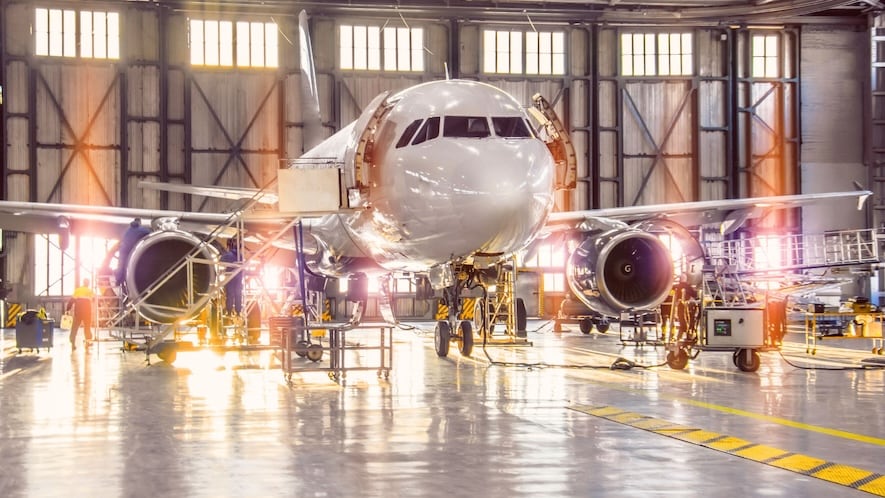{{item.title}}
{{item.text}}

{{item.text}}
2024 was a year of record revenue across aerospace and defense. But beneath the headline gains, operational cracks are showing. Demand persists in outpacing supply while capacity remains constrained. And systemic pressures in the workforce and supply chain have intensified, compounded by evolving trade dynamics and tariff risks.
Based on data from the top 100 A&D companies by revenue, this report delivers insights into where growth is happening, what’s holding it back and how sector leaders are navigating complex paths forward. Here are five takeaways that reflect the sector’s current trajectory—and the operational priorities shaping what comes next.
Demand across both civil and defense aviation soared in 2024, yet production continues to lag. Labor gaps and vulnerable supply chains are limiting output and backlogs now stretch for years. Tariff shifts are also complicating global sourcing strategies, particularly for raw materials and specialized inputs. Aerospace manufacturers are prioritizing resilience—diversifying suppliers, reskilling workers and redesigning operating models for long-term flexibility.
M&A volume in 2024 didn’t fully recover to prepandemic levels, but deal flow remained consistent across segments, especially where companies sought supply chain synergies or digital-capability uplifts. Companies are moving with greater caution, focusing on integration success and long-term transformation.
Commercial aviation is booming. Airlines are placing orders to modernize their fleets and meet surging travel demand, but manufacturers can’t build fast enough. Backlogs remained elevated, underscoring the widening gap between demand and delivery. Labor, inflation and limited parts availability all continue to pinch production.
The uptick in spending is fueled by government priorities in cyber, space and next-gen defense tech. Procurement, however, is complex and highly varied by country and region. Companies should navigate evolving requirements while building long-term capability pipelines.
Public and private investment in space surged again in 2024, with satellite, launch and deep space missions all seeing sharp increases. The convergence of national security imperatives and commercial opportunity is accelerating innovation, though funding clarity and regulatory frameworks remain emerging challenges.
A&D companies are under pressure to do more than meet demand—they should rethink how they build, deliver and sustain. Transformation is no longer optional. Companies leading the way in 2025 are:
The choices leaders make now that affect supply, talent and transformation will shape their competitive advantage across the coming decade.
{{item.text}}

{{item.text}}

